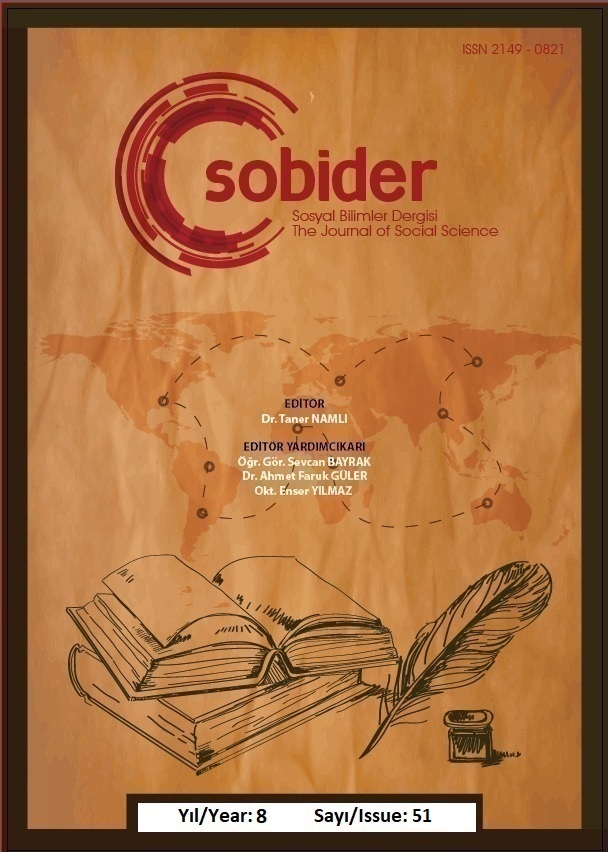Author :
Abstract
Serahsi’nin fıkıh sistematiğinde Kur’an bir delildir. Serahsî, hükmü anlatma sırasında hükmün bina edildiği ayetleri yeri geldikçe zorunlu olarak açıklamaktadır. Açıklama bazen Kur’an ilimleriyle olurken bazen ayetin ihtiva ettiği manalardan birine evrilme şeklinde olmaktadır. Te’vil olarak da ifade edilebilecek olan bu evrilmede başat rol oynayan, onun zihninde kurduğu alakadır. Bu anlamda Serahsî’nin ayeti nasıl anladığı sorusunun cevabı da bu alaka ile ortaya çıkmaktadır. Te’vil, en yalın anlamı ile kelamın sahip olduğu manalardan birini tercih etmek olduğuna göre bu tercihte öne çıkan unsur, müevvilin meseledeki anlayışını şekillendiren zihninde başka bir şeyle kurduğu ilgidir. Ayetin anlaşılmasının bir başka adının te’vil olduğunu söylemek mümkündür. Bunu yaparken kaynakların istişhadına başvurmuştur. Bu çalışmamız Serahsi’nin ayette geçen tahlilini yaptığı kelimelerin anlaşılması için nasıl bir yol izlediğini ele almaktadır. Kaynaklarının neler olduğu ve kelime tahlilinde bu kaynakları kullanırken teorinin pratikteki halinin nasıl olduğu ortaya konmaya çalışılmıştır.
Keywords
Abstract
The Quran is an evidence in Serahsi's fiqh system. Serahsî explains the verses in which the judgment is made whenever necessary. While the explanation is sometimes based on the sciences of the Qur'an, sometimes it takes the form of evolving into one of the meanings contained in the verse. The dominant role in this evolution, which can also be expressed as Te'vil, is the interest he established in his mind. In this sense, the answer to the question of how Serahsî understood the verse emerges with this relevance. Since Te'vil, in its simplest meaning, is to prefer one of the meanings that kalam has, the prominent element in this preference is the interest that the devil establishes with something else in his mind that shapes his understanding of the issue. It is possible to say that another name for understanding the verse is interpretation. In doing so, it has resorted to the sources consultation. This study deals with the way Serahsi followed in order to understand the words he analyzed in the verse. It has been tried to reveal what the sources are and how the theory is in practice while using these sources in word analysis.
Keywords
- Birgivi, Avamil, Mecmuatü’n Nahiv, Şifa Yayınevi, İstanbul 2010.
- el- Meylani, Abdurrahman b. El-Hüseyin, Şerhu’l Muğni, Mektebetü’l İrşad, İstanbul 2017.
- en-Nehhas, Ebi Ca’fer, Meani’l Kur’ani’l Kerim, tahk: Muhammed Ali es-Sabuni, Mektebetü’l Mükerreme, Mekke 1988.
- ez-Zeccac, Ebi İshak İbrahim, Meani’l Kur’an ve İ’rabuhu, Alemü’l Kütüp, Beyrut 1988.
- Güngör, Mevlüt, Kur’an Tefsirinde Fıkhı Tefsir Hareketi ve ilk Fıkhi Tefsir, Kur’an Kitaplığı, İstanbul 1996.
- İbn Manzur, Ebi’l Fadl Cemalüddin Muhammed b. Mükerrem, Lisânü’l Arap, Daru Sâdır, Beyrut 1990.
- İmamoğlu, İbrahim Hakkı, Tefsire ve Kur’an İlimlerine Dair Yüz Kavram, Safa Yayın Dağıtım, İstanbul, 2017.
- Öğmüş Harun, Kur’an Yorumunda Şiirin Yeri (II./VIII. Asır Çerçevesinde), İsam Yayınları, İstanbul 2010.
- Serahsi, Ebi Bekr Muhammed b. Ahmed Ebi Sehl, Usul-ü Serahsi, Tahkik; Ebu’l Vefa el- Afgani, Daru’l Kütübi’l İlmiyye, Beyrut 2015.
- Serahsî, Muhammed b. Ahmed, el-Mebsut, editör: Cevat Akşit, Gümüşev Yayıncılık, İstanbul 2008.





